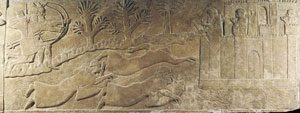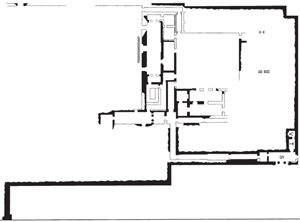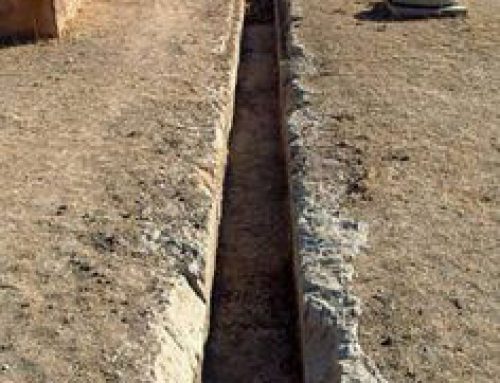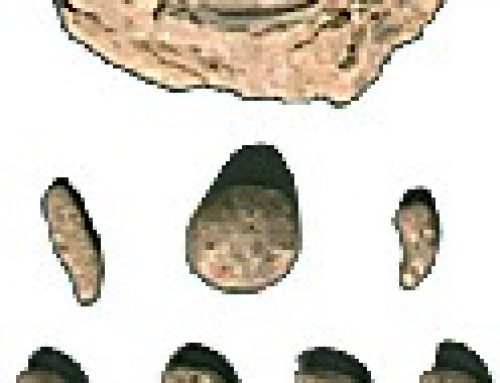
On the walls of one of the Assyrian palaces, Assyrian soldiers attack a town. Some are swimming, using balloons made of goatskins to hold themselves up. Palace of Ashurnasirpal II, Nimrud, 860 BC. See the walls and buildings of the town?
Assyrian kings built palaces
The Assyrian kings’ main architecture was their big palaces. The kings forced their subjects to build them palaces starting about 860 BC. The Assyrian palaces were very similar to earlier West Asian palaces. But they had fancier, more expensive stone-carvings instead of painting on the walls.
Who were the Assyrians?
Earlier West Asian buildings
All our Mesopotamia articles

Ashurnasirpal’s palace at Nimrud
The palace at Nimrud
In 860 BC, the Assyrian king Ashurnasirpal II forced his subjects to build him an enormous palace at Nimrud. The rooms of Ashurnasirpal’s palace follow a traditional pattern. There’s a big public courtyard. On three sides of the courtyard, there are government offices and storage.
What was Assyrian government like?
The fourth side is the throne room, and then there’s a smaller, private courtyard. The second side of the private courtyard has a place for prayer and rituals, the third side is the king and queens’ private living area, and the fourth side is the formal dining rooms. Near the king’s rooms is the treasury.
Food in West Asia
What did Assyrians use for money?
Assyrian religion and gods
Assyrian wall carvings

Ashurbanibal’s palace at Nineveh. Can you find the throne room?
This palace, like older Egyptian tombs, had wall carvings in relief all over the walls, painted to look alive, so that everywhere you walked in the main rooms of the palace you were surrounded by scenes showing Assurnasirpal conquering people, or Ashurnasirpal’s prisoners, or people bowing down before Assurnasirpal. Today the paint has all rubbed off, but you can imagine it used to be much more colorful!
Compare to Egyptian tomb painting
Palaces at Nineveh and Susa
Later Assyrian kings also built palaces, but the rooms were arranged in pretty much the same way. Sennacherib built a palace at Nineveh, and he also reorganized the whole city, with an aqueduct carrying fresh water to Nineveh from the mountains, and major irrigation canals.

Lion hunting – Assyrian palaces often showed the king being heroic
What’s an aqueduct?
Why is irrigation important?
The Assyrian king Ashurbanipal forced his subjects to build him a palace too, about 650 BC in Nineveh, and another one at Susa. These palaces were very similar to Ashurnasirpal’s palace, both in where the rooms were and in the stone carvings on the walls.





this was unhelpful for my presentation im going to make
Sorry to hear it! What were you looking for? We have a lot more articles about West Asia here: https://quatr.us/mesopotamia-iran-levant-west-asia-articles